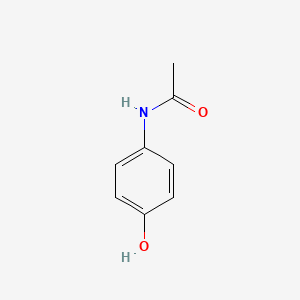|
Name: Acetaminophen
Type: Analgesic
AKA: Tylenol, Paracetamol, APAP

|
|
II. Natural Derivative
Synthetic substance, no natural derivative
 |
|
III. Chemical Profile (IUPAC name)

|
|
IV. History
Acetaminophen, also known as paracetamol, was discovered in the 19th century and introduced for medical use in the 1950s. It is widely used as a pain reliever and fever reducer. Its widespread use in over-the-counter medications has made it one of the most commonly used analgesics worldwide.

|
|
V. Legal Information
Acetaminophen is a widely used analgesic and antipyretic. It is not a controlled substance but is regulated in medical products for quality and safety. [Source: UNODC].
Key US Federal Policies:
Acetaminophen is regulated by the FDA to ensure safety and efficacy. Over-the-counter products must adhere to strict labeling requirements to inform consumers about proper use and risks. Prescription formulations are also available for higher dosages and combination products.
|
|
VI. Physical Effects
Acetaminophen is a common analgesic and antipyretic used for pain relief and fever reduction. It acts as a downer, providing relief from pain and reducing fever. Short-term use is generally safe when used as directed, but excessive use can lead to liver damage. Safe use involves following dosage instructions. Recent research highlights its efficacy for pain management and the importance of avoiding overdose to prevent liver damage.  |
|
VII. Psychological Effects
Acetaminophen is an analgesic and antipyretic with minimal psychological impact. Immediate effects are primarily physical, reducing pain and fever. Long-term use is generally safe at recommended doses. Chronic high-dose use can lead to liver damage, with potential indirect effects on mood due to chronic pain. Recent studies highlight safe use guidelines and potential risks of overdose.
 |
|
VIII. Culture
Acetaminophen is a widely used analgesic and antipyretic. Its cultural significance is tied to its role in managing pain and fever. Media coverage often highlights its effectiveness and the importance of proper dosing to avoid overdose. Acetaminophen is used medicinally and is part of broader discussions about pain management and over-the-counter medications.
 |
